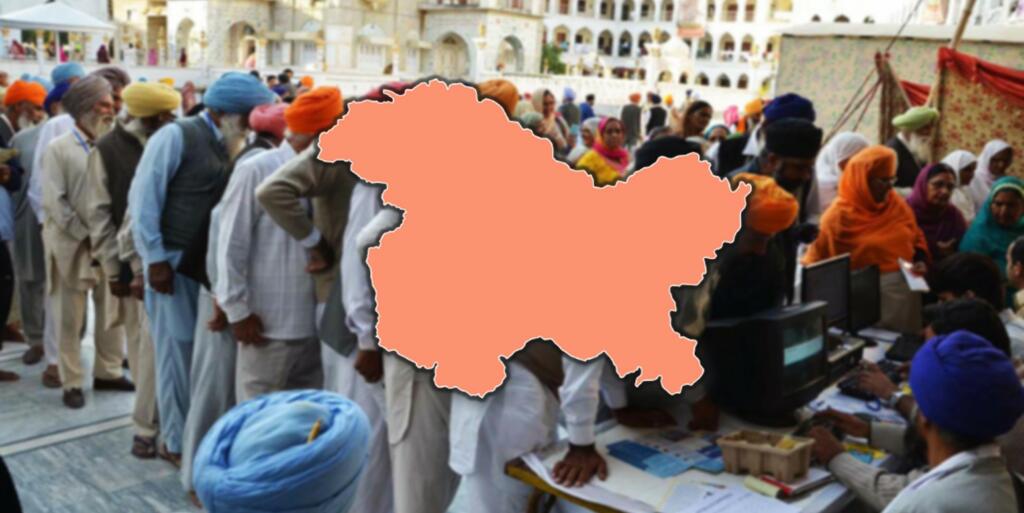In the past, there have been years when the Kashmiri minorities have struggled to attain the basic necessities for peaceful living. Hindus and Sikhs, in particular, have been its protagonist. The Islamic invasion and the horrific exodus are just instances of its documentation. However, coins started flipping after the abrogation of Article 370. And to mark another establishment under PM Narendra Modi-led government, Hindus and Sikhs in Jammu and Kashmir are finally receiving their deserved status as citizens.
Land ownership rights to the people of Jammu and Kashmir
As recently reported, the Jammu and Kashmir administration has initiated the process of giving land ownership rights to refugees from West Pakistan.
As per government figures, around 5,400 families had taken refuge in the border area after 1947. These Pakistani refugee families included a majority of Hindus and Sikhs. To add to it, these families were allotted 5,833 acres of land in Jammu, Samba, and Kathua regions, specifically.
But even after 68 years, these families were not given land ownership rights. It was believed that due to the implementation of Article 370, these people will never be considered citizens of Jammu and Kashmir. It was so because, under Article 370, the outsiders neither had any right to buy land nor to do any government jobs. However, the removal of Article 370 cleared the path for Kashmiri Hindus and Sikhs to exercise their right to land ownership.
Focusing on the development, it was also reported that now the government is also giving Rs 5.5 lakh per family, considering them as residents of the region. For this purpose, information like the number of families, total land under occupation, and status of the land, among others will be collected to provide ownership of land.
This clearly depicts the earlier struggles for Hindus and Sikhs in Jammu and Kashmir. But at the same time, it’s important to know the beginning of Hindu discrimination.
Read more: It is time to build settlements of Hindus in Kashmir, Israel style
Kashmiri minorities were earlier left to brutality
Seemingly, Islamization in Kashmir began with the changing of names of around 300 places to Islamic names. This was followed by horrific anecdotes. During 1947-48, the Pakistani army and the Muslim tribesmen invaded Jammu and Kashmir. Thousands of Hindus and Sikhs were indiscriminately killed, raped, murdered, and brutalized. According to reports, more than 50,000 Hindus and Sikhs had lost their lives.
According to an estimate, in a single day, around 5,000 girls and women were taken away by Muslim invaders, including tribals and the Pakistani army. One of the biggest massacres that occurred during that period was in Mirpur, which is now a part of Pakistan-Occupied Kashmir. It has a Hindu and Sikh population of around 40,000 people. The site carries memoirs that reveal the atrocities that were committed targeting a particular sect of the community.
In the aftermath of marking gruesome incidents in 1990, another massacre was followed in 1998. During the Wandhama massacre, even children were not spared by the terrorists. The Kashmiri Pandit genocide marked thousands of murders and rapes. On the other hand, over 6,00,000 to 7,00,000 Kashmiri Pandits were turned into refugees on their own land.
Eventually, all these incidents marked the deterioration of the Hindu population from the valley. When the exodus started, the Hindu population was estimated to be in lakhs. However, Hindus being a minority in Jammu and Kashmir forms a total of a mere 28.44 percent population, as per Jammu and Kashmir regional Census 2011.
Read more: Kashmir has only seen terrorism, now it will witness an economic boom
Development following the abrogation of Article 370
It is unfortunate that while the international community is busy talking about Islamophobia, they are being negligent towards the evident Hindu genocides. It’s good to uplift a community but not at the cost of murdering the other.
The Narendra Modi-led government sought this notion of settling the displaced Hindu population of Jammu and Kashmir. For this purpose, a historic decision was taken by the central government, abrogating Article 370.
Ever since the article was removed, developments followed the ways of Jammu and Kashmir. Laborers, women, and other people were now allowed to exercise their rights freely. On the other hand, after the historic decision, the region saw immense growth in investments. It attracted a total investment of Rs 63,300 crores.
In the year 2021, Jammu and Kashmir received investment proposals worth Rs 52,155 crores. According to a report by the Times of India, these investments are good enough to feed 2.4 lakh families. The government has already given assent to investments worth Rs 36,244 crores. With this, the government ensured a livelihood opportunity for nearly 1.36 lakh individuals.
Kashmir is already fully enriched with resources, a conducive environment, less environmental concern, and now an improved law and order. It won’t be long for Kashmiris to regain their healthy- wealthy valley once again. People including Hindus and Sikhs will now be able to get the most out of it after receiving the citizens status of the Jammu and Kashmir.
Support TFI:
Support us to strengthen the ‘Right’ ideology of cultural nationalism by purchasing the best quality garments from TFI-STORE.COM
